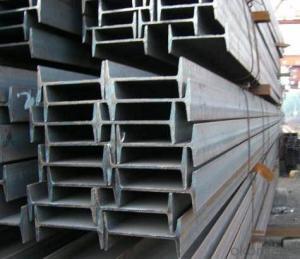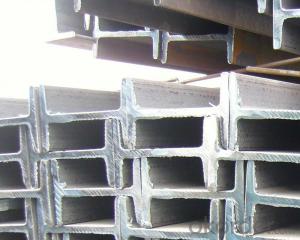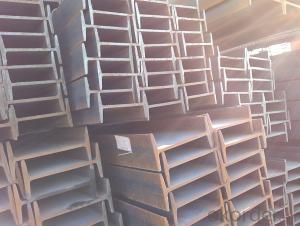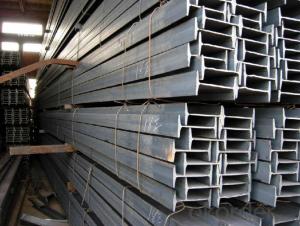European Standard IPE200 with High Quality
- Loading Port:
- Tianjin
- Payment Terms:
- TT or LC
- Min Order Qty:
- 50 m.t
- Supply Capability:
- 15000 m.t/month
OKorder Service Pledge
OKorder Financial Service
You Might Also Like
Product Description of European Standard IPE200 with High Quality:
Specifications of European Standard IPE200 with High Quality:
1.Standard: EN10025
2.Material: S235JR or Equivalent
3.Length: 6m, 12m
4.Size:
Size (mm) | Mass (kg/m) |
| 200*100*5.6 | 22.4 |
Usage & Applications of European Standard IPE200 with High Quality:
Commercial building structure;
Pre-engineered buildings;
Machinery support structures;
Prefabricated structure;
Medium scale bridges.
Packaging & Delivery of European Standard IPE200 with High Quality:
1. Transportation: the goods are delivered by truck from mill to loading port, the maximum quantity can be loaded is around 40MTs by each truck. If the order quantity cannot reach the full truck loaded, the transportation cost per ton will be little higher than full load.
2. With bundles and load in 20 feet/40 feet container, or by bulk cargo, also we could do as customer's request.
3. Marks:
Color mark: There will be color marking on both end of the bundle for the cargo delivered by bulk vessel. That makes it easily to distinguish at the destination port.
Tag mark: There will be tag mark tied up on the bundles. The information usually including supplier logo and name, product name, made in China, shipping marks and other information request by the customer.
If loading by container the marking is not needed, but we will prepare it as customer's request.
FAQ:
Q1: Why buy Materials & Equipment from OKorder.com?
A1: All products offered byOKorder.com are carefully selected from China's most reliable manufacturing enterprises. Through its ISO certifications, OKorder.com adheres to the highest standards and a commitment to supply chain safety and customer satisfaction.
Q2: How do we guarantee the quality of our products?
A2: We have established an advanced quality management system which conducts strict quality tests at every step, from raw materials to the final product. At the same time, we provide extensive follow-up service assurances as required.
Q3: How soon can we receive the product after purchase?
A3: When we receive the advance payment or original LC, we will arrange production. The shipping date is dependent upon the quatity, how many sizes you want and the plan of production, but is typically 1 month to 2 month days from the beginning of production.
Images of European Standard IPE200 with High Quality:
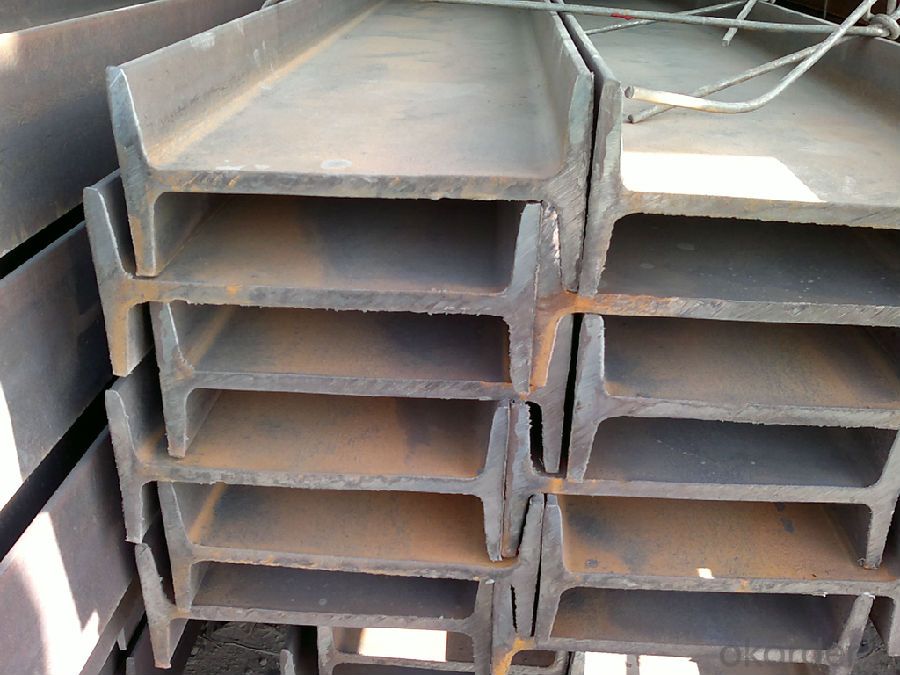
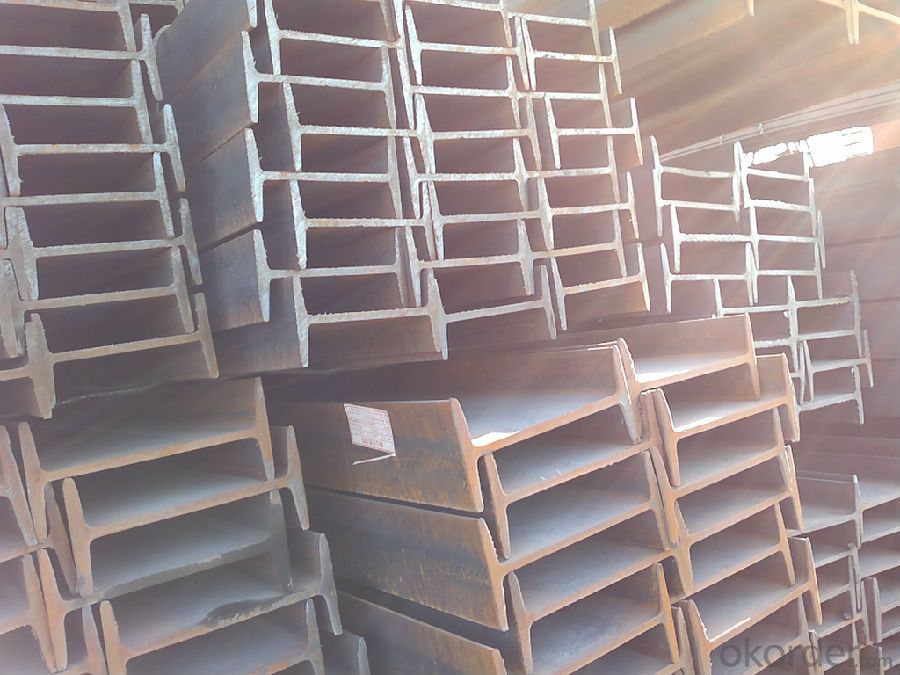
*If you would like to get our price, please inform us the size, standard/material and quantity. Thank you very much for your attention.
- Q:Are steel I-beams cost-effective compared to other materials?
- Yes, steel I-beams are generally considered cost-effective compared to other materials. They offer high strength-to-weight ratio, durability, and ease of construction, making them a popular choice in various industries. Additionally, steel is widely available, recyclable, and has a long lifespan, reducing maintenance and replacement costs.
- Q:How do steel I-beams contribute to the overall stability of a structure?
- Enhancing the overall stability of a structure is a crucial role played by steel I-beams. These beams are specifically engineered to carry and distribute the building's load across its length, thereby preventing stress concentration in specific areas. The distinctive shape of an I-beam, with its flanges and web, grants it exceptional strength and resistance against bending or twisting forces. A significant contribution made by steel I-beams towards stability is providing structural support and minimizing the risk of building collapse. The horizontal flanges of the I-beam aid in evenly distributing the structure's weight, enabling it to bear substantial loads, including the building's own weight and additional live loads like furniture, equipment, or people. This distribution of load ensures stability and reduces the chance of catastrophic failure. Furthermore, steel I-beams effectively resist both vertical and horizontal forces, such as wind or seismic loads. The robust and rigid nature of steel allows these beams to transmit these forces through the structure, preventing excessive deflection or deformation. By withstanding these external forces, I-beams preserve the integrity of the structure, safeguarding it against potential damage or collapse. An additional advantage of steel I-beams lies in their ability to span long distances without requiring intermediate supports. These beams can be fabricated to span significant distances, eliminating the need for additional columns or walls. This grants more design flexibility and utilization of space, enabling open floor plans and maximizing the usable area of the structure. Moreover, steel I-beams are highly durable and possess a high strength-to-weight ratio. This means they can withstand heavy loads while being relatively lightweight compared to other construction materials. This advantage simplifies the construction process, reduces the overall weight of the structure, and leads to cost savings and increased design adaptability. In conclusion, steel I-beams contribute to the overall stability of a structure through structural support, load distribution, resistance against external forces, long-span capabilities, and durability. Their unique design and material properties establish them as indispensable components for ensuring the safety and stability of buildings in various applications, ranging from residential homes to large-scale commercial or industrial structures.
- Q:Can steel I-beams be used for retail buildings?
- Yes, steel I-beams can be used for retail buildings. Steel I-beams are commonly used in commercial construction, including retail buildings, due to their strength and load-bearing capabilities. They provide structural support, allowing for larger open spaces and flexible layouts in retail spaces.
- Q:What are the different types of steel connections for I-beams?
- Different types of steel connections are available for I-beams, each serving a specific purpose and offering unique advantages. Some commonly used steel connections for I-beams include the following: 1. I-beams can be connected using welding, which involves melting the metal surfaces and joining them with a filler material. Welded connections provide excellent strength and stiffness, making them suitable for heavy-duty applications. 2. Bolted connections involve using bolts, nuts, and washers to secure the I-beams together. This type of connection offers flexibility as it allows for disassembly and reassembly, making it ideal for situations that require easy maintenance or modification. 3. Riveted connections use rivets to connect I-beams. This method involves drilling holes through the flanges and webs of the beams and inserting rivets to hold them together. Riveted connections are known for their high strength and durability, making them suitable for structural applications. 4. Pinned connections use pins to connect the I-beams. This type of connection allows for rotational movement between the beams, making it suitable for situations where flexibility and movement are required, such as in trusses or roof structures. 5. Moment connections are designed to transfer bending moments between I-beams. These connections are typically used in structures where a high level of rigidity is required, such as in multi-story buildings or bridges. Moment connections can be either welded or bolted, depending on the specific application. 6. Splice connections are used to join two I-beams together to create longer beams. This type of connection is often used when longer lengths of beams are required but cannot be obtained in a single piece. Splice connections can be welded, bolted, or riveted, depending on the design requirements. It's important to consider various factors, such as structural requirements, load-bearing capacity, ease of installation, and maintenance considerations, when choosing a steel connection for I-beams. Consulting with a structural engineer or steel fabrication specialist is recommended to determine the most suitable connection type for a specific application.
- Q:What are the independent foundations of the square column and the I-beam column?
- The steel column baseboard size is known, the independent foundation short column size request is bigger than the column baseboard, each side 100, and is bigger than the anchor bolt each side 5D and 150.
- Q:What are the different methods of protecting steel I-beams from fire?
- There exists a range of techniques available for safeguarding steel I-beams against fire. The main objective of these techniques is to prevent the steel from reaching its critical temperature, as exceeding this temperature can result in structural failure. 1. Intumescent coatings are frequently employed to shield steel I-beams from fire. When exposed to high temperatures, these coatings expand and form a char, which acts as insulation for the steel and hinders the transfer of heat. This effectively slows down the increase in temperature of the steel, allowing for more time for evacuation and firefighting efforts. 2. Fire-resistant cladding serves as another effective method. Materials such as gypsum boards or cementitious boards are installed around the steel I-beams to create an insulating layer. These boards possess the ability to withstand high temperatures and prevent the heat from reaching the steel. 3. Sprayed-on fireproofing materials are commonly used to safeguard steel structures from fire. Mineral wool, vermiculite, or cementitious sprays are directly applied onto the steel I-beams, forming a protective layer that insulates the steel and retards the transfer of heat. 4. Creating fireproof enclosures around steel I-beams is an additional method that proves effective. This involves constructing fire-resistant walls or enclosures using materials such as concrete or masonry. These enclosures serve to isolate the steel from fire and prevent the heat from reaching the beams. 5. Incorporating fire-resistant features into the design of steel structures can also provide protection for I-beams against fire. This includes incorporating fire stops, fire barriers, and fire-resistant partitions to compartmentalize the building and impede the spread of fire. It is crucial to consider various factors, including the desired fire rating, building codes, and project budget when selecting a method. Consulting with fire protection engineers or professionals specializing in structural fire protection can assist in determining the most suitable technique for safeguarding steel I-beams from fire in a specific scenario.
- Q:Can steel I-beams be used for agricultural structures?
- Yes, steel I-beams can be used for agricultural structures. Steel I-beams are strong, durable, and have a high load-bearing capacity, making them suitable for various agricultural applications. They can be used to construct barns, sheds, storage facilities, and other agricultural buildings. Steel I-beams provide structural integrity and can withstand heavy loads, ensuring the safety and longevity of the agricultural structure. Additionally, steel is resistant to pests, fire, and rot, making it an ideal choice for agricultural buildings that need to withstand harsh conditions. The flexibility of steel allows for versatile designs, accommodating the specific needs and requirements of different agricultural operations. Overall, steel I-beams offer a reliable and cost-effective solution for agricultural structures.
- Q:Can steel I-beams be used for column support?
- Yes, steel I-beams can be used for column support.
- Q:What span is the maximum span for I-beam?
- 1. determine the steel beam span, load point position and weight, make the bending moment diagram, and calculate the maximum bending moment M (MAX)2. general I-beam material is Q235, sigma (s) =2400KG/CM2, determine safety factor, generally take 1.7, [Sigma]=2400/1.7=1412KG/CM23.M (MAX) /]<=W (x), to meet the strength. W (x) refer to the mechanical design handbook for the bending modulus of i-beam.
- Q:Can steel I-beams be used for exhibition halls?
- Indeed, exhibition halls can utilize steel I-beams as a structural component. Renowned for their robustness, endurance, and ability to bear heavy loads, steel I-beams are extensively employed within the construction sector. Given that exhibition halls typically necessitate expansive areas devoid of obstructions, steel I-beams fulfill the indispensable role of providing the requisite structural support for such requirements. They possess the capability to span considerable distances and withstand substantial loads, which proves vital for exhibition halls housing sizable exhibits, equipment, and crowds of individuals. Moreover, steel I-beams can be customized and manufactured to adhere to precise architectural and aesthetic specifications, thereby affording flexibility in the overall design of the exhibition hall.
1. Manufacturer Overview |
|
|---|---|
| Location | |
| Year Established | |
| Annual Output Value | |
| Main Markets | |
| Company Certifications | |
2. Manufacturer Certificates |
|
|---|---|
| a) Certification Name | |
| Range | |
| Reference | |
| Validity Period | |
3. Manufacturer Capability |
|
|---|---|
| a)Trade Capacity | |
| Nearest Port | |
| Export Percentage | |
| No.of Employees in Trade Department | |
| Language Spoken: | |
| b)Factory Information | |
| Factory Size: | |
| No. of Production Lines | |
| Contract Manufacturing | |
| Product Price Range | |
Send your message to us
European Standard IPE200 with High Quality
- Loading Port:
- Tianjin
- Payment Terms:
- TT or LC
- Min Order Qty:
- 50 m.t
- Supply Capability:
- 15000 m.t/month
OKorder Service Pledge
OKorder Financial Service
Similar products
New products
Hot products
Hot Searches
Related keywords
